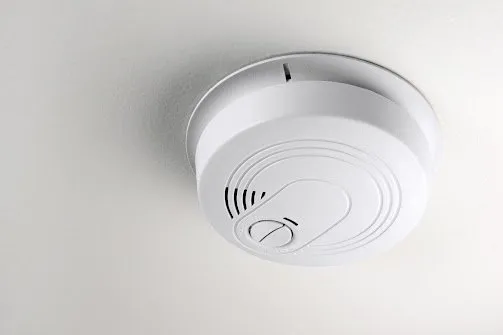HOW TO CHOOSE THE BEST SMOKE ALARMS FOR YOUR HOME

If you need to install new smoke alarms or replace old ones, then you should make sure that you buy the best units for your home. Smoke alarms, their technologies and their systems aren’t all the same. It pays to learn more about these units before you install them.
Read on to learn more about home smoke alarms so that you can make informed choices and give your home maximum protection.
Smoke alarms work in different ways
All domestic smoke alarms alert you to a fire or smoke in your home. They trigger alerts when they detect smoke particles. However, these alarms don’t all work the same way. You have to choose from two types of technology here:
IONISATION ALARMS
An ionisation alarm uses a small piece of radioactive material to detect smoke. When smoke particles enter the unit and come into contact with this material, they cause a reaction that triggers the alarm.
PHOTOELECTRIC ALARMS
A photoelectric alarm uses photo/light technology to detect smoke. Each alarm contains a photocell and a beam of light. If smoke enters the unit, it disrupts this beam, and the cell will trigger the alarm.
While both ionisation and photelectric alarms use proven technology, their response times can be different. For example, an ionisation alarm responds well to fast-burning fires but doesn’t react as quickly to smouldering ones.
On the other hand, a photoelectric unit is usually better at giving an earlier alarm, especially if a fire smoulders before it gets out of control. Given that many domestic fires do smoulder, this kind of alarm is often the best option for protection in the home.
Smoke alarms use different types of power
Smoke alarms use different types of power. For example, some units use battery power. At a basic level, some units use a standard battery which you have to change when it runs out.
However, some battery-operated designs use longer-life batteries, such as lithium-ion products. These batteries last for many years and aren’t usually changeable. In this case, you buy a new alarm unit when the battery runs out.
You can also hardwire smoke alarms to your home’s electrics. These alarms run off your domestic power supply and also usually have a battery backup in case of an outage.
While battery-operated alarms work well, they aren’t completely reliable. If you don’t notice when a battery runs low, then an alarm might not work. It won’t protect you if a fire breaks out if it doesn’t have the power to detect smoke.
If you hardwire your units, then you get more of a guarantee of protection. You don’t need to worry about checking your batteries. The alarm should work even if your power goes out as long as you buy units with a backup supply.
Smoke alarms can connect to each other
If you use independent units, then you have to rely on hearing a unit’s alarm when it goes off. Other units in your home won’t trigger until smoke reaches their location. This might reduce the time you get to deal with a fire or escape to safety.
If you install a connected system, then all your smoke alarms go off if one of them detects smoke. You’ll get an earlier and more noticeable warning that you might have a fire in your home.
Finally, don’t forget that state safety regulations set some conditions on the types of smoke alarms you should use in your home. To find out more about local rules, contact Smart-Safe Electrical Services. We can help you choose and install compliant smoke alarms that give your home the best levels of
